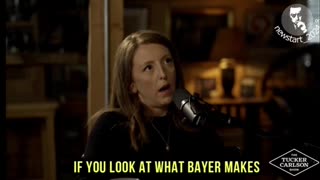MICRO & NANO PLASTIC PARTICLES 🚰
Toxins / Poisons & Venoms greatly contribute to cancers, interfering with normal biological processes and breaking down your natural immunity / immune sytem.
AVERAGE U.S. comsumption (we are told) equals eating and drinking ONE CREDIT CARD per WEEK!
Found in drinks and food packaged in plastic.🚨
⬇️
By Joe McLean (KY3)
Published: Aug. 16, 2024 at 4:52 PM CDT|Updated: Aug. 16, 2024 at 6:48 PM CDT
COLUMBIA, Mo. (KY3) - Scientists at the University of Missouri created a new, specialized solvent designed to remove nanoplastics from water.
Nanoplastics are microscopic particles, significantly smaller in diameter than human hair and invisible to the naked eye.
“Nanoplastics can disrupt aquatic ecosystems and enter the food chain, posing risks to both wildlife and humans,” said Piyuni Ishtaweera, a recent alumna who led the study while earning her doctorate in nano and materials chemistry at Mizzou. “In layman’s terms, we’re developing better ways to remove contaminants such as nanoplastics from water.”
As nanoplastics build up, they can lead to cardiovascular and respiratory diseases in people.
Gary Baker, an associate chemistry professor, said his team was able to create a new liquid-based solution that eliminates more than 98% of these microscopic plastic particles from water.
“Our strategy uses a small amount of designer solvent to absorb plastic particles from a large volume of water,” said Gary Baker, an associate professor in Mizzou’s Department of Chemistry and the study’s corresponding author. “Currently, the capacity of these solvents is not well understood. In future work, we aim to determine the maximum capacity of the solvent. Additionally, we will explore methods to recycle the solvents, enabling their reuse multiple times if necessary.”
Studies show humans consume microplastics and nanoplastics in an amount equal to roughly a credit card per week from eating, drinking, or even just drawing breath.
Baker said the next step in developing this technology will be up to engineers, who will work to scale up the process to purify more than one vial at a time.
Fair Use Disclaimer:
This video may contain copyrighted material the use of which has not always been specifically authorized by the copyright owner. We are making such material available for purposes of criticism, comment, news reporting, teaching, scholarship, or research. We believe this constitutes a 'fair use' of any such copyrighted material as provided for in section 107 of the US Copyright Law.
REQUEST FOR PARTIAL OR FULL REMOVAL CAN BE OFFERED IN COMMENTS.
-
 0:46
0:46
🌿ANCCR🕊️
9 hours agoAGRI-PHARMING
4 -
 2:42:41
2:42:41
Laura Loomer
8 hours agoEP71: Judge Merchan’s Daughter’s Company SUBPOENAED
59K36 -
 55:12
55:12
LFA TV
1 day agoRegime Media: There Is No Migrant Crime Wave | TRUMPET DAILY 8/29/24 9pm
55.5K9 -
 1:25:58
1:25:58
Glenn Greenwald
11 hours agoBrazil's Repressive Censorship Judge To Ban X Nationwide; Has Trump 2024 Retained Its Populist Ideology? With Sohrab Ahmari | SYSTEM UPDATE #325
111K103 -
 1:13:49
1:13:49
Havoc
12 hours agoWhat Goes Into Making a Dope Album? | Stuck Off the Realness Ep. 11
71K8 -
 2:18:48
2:18:48
Roseanne Barr
12 hours ago $18.06 earnedThe Return of Primetime Alex Stein | The Roseanne Barr Podcast #63
110K114 -
 4:55:08
4:55:08
Tundra Tactical
8 hours agoThe Worlds Okayest War Thunder Stream
52.2K4 -
 1:02:46
1:02:46
Josh Pate's College Football Show
13 hours agoEp 547: Week 1 Upset Alert Meter | LSU-USC Prediction | New SEC On ABC Music | Cole Cubelic RETURNS
44.4K4 -
 42:25
42:25
Chrissy Clark
9 hours agoTucker Carlson ROASTS Kamala & RFK Talks Faith I Underreported Stories
49.6K19 -
 1:00:56
1:00:56
Donald Trump Jr.
17 hours agoThe Roadmap to a MAGA Victory, Interviews with Sean Davis & Tim Murtaugh | TRIGGERED Ep.169
118K94